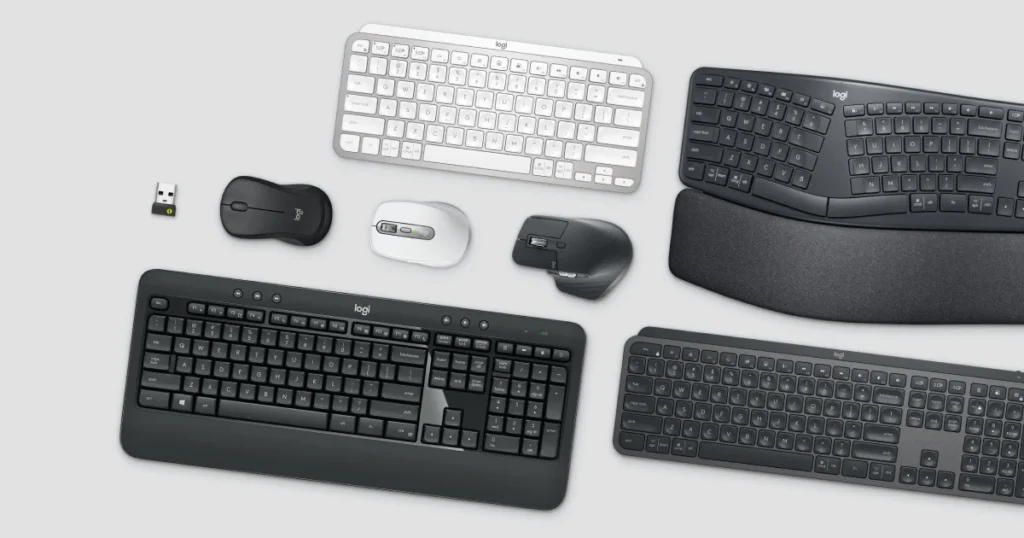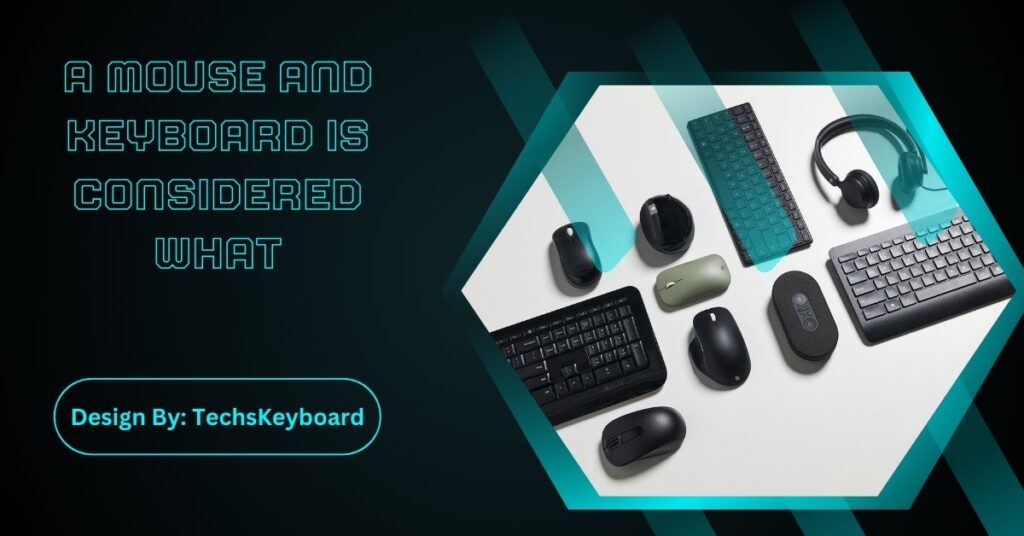A mouse and keyboard are input devices that allow users to send data and commands to a computer, facilitating interaction through text, clicks, and navigation in digital environments.
If you’ve ever stumbled across the question, “A mouse and keyboard is considered what?” you’re probably looking for a better understanding of where these essential tools fit into the realm of computer hardware. Whether you’re a tech enthusiast, a student, or just someone wanting to know more about the equipment you use daily, this guide will break it down for you.
A Mouse and a Keyboard Are Considered Input Devices:
To put it simply, a mouse and keyboard are classified as input devices in the world of computing. An input device is any piece of hardware that sends data to a computer, allowing you to interact with and control it. By translating your physical actions into digital signals, these devices play a crucial role in communication between the user and the machine.
The Role of a Keyboard as an Input Device
The keyboard is one of the earliest and most widely used input devices. Its primary function is to input text, commands, and shortcuts into a computer system. When you press a key, it sends a specific signal to the computer, which interprets it as a character or action.
Key Features of a Keyboard:
- Character Input: Letters, numbers, and symbols.
- Shortcuts & Commands: Allows navigation and multitasking through shortcuts like Ctrl+C (copy) and Alt+Tab (switching tabs).
- Functionality in Software: Works seamlessly across word processors, spreadsheet programs, coding environments, and more.
The Role of a Mouse as an Input Device
Much like the keyboard, the mouse is an essential tool for everyday computer use. It allows you to interact with graphical elements on the screen by controlling the cursor’s movement and translating clicks into commands.
Key Features of a Mouse:
- Cursor Control: Enables precision while navigating on-screen.
- Click & Drag Functions: Helps perform actions like selecting, moving, or resizing objects.
- Scroll: The scroll wheel allows smooth navigation through documents, web pages, and other content.
Why Are These Devices Important?

Without input devices like the mouse and keyboard, interacting with a computer in its modern form would be nearly impossible. While touchscreens and voice input are growing in popularity, the mouse and keyboard remain the gold standard for tasks that require precision and efficiency, such as typing, gaming, designing, and programming.
Evolution of Input Devices
Over time, the design and functionality of both input devices have evolved:
- Keyboards have advanced with ergonomic designs, backlighting, and mechanical switches for gamers and creatives.
- Mice now include features like customizable buttons, enhanced DPI settings for better sensitivity, and wireless connectivity for convenience.
How Do Input Devices Differ from Other Hardware?
To further clarify the concept, let’s look at other categories of computer hardware:
Input Devices:
- Examples include keyboards, mice, touchscreens, and microphones.
- Their purpose is to send data to the computer.
Output Devices:
- Examples include monitors, printers, and speakers.
- These devices display or project data from the computer to the user.
Processing Units:
- The CPU (Central Processing Unit) is the brain of the computer, where data is processed.
Storage Devices:
- Hard drives (HDDs), solid-state drives (SSDs), and USB drives store data for later use.
Innovations in Keyboard Technology:
Recent advancements in keyboard technology have expanded the functionalities and user experience in significant ways. Mechanical keyboards, for instance, offer a tactile feedback experience that many typists and gamers find superior to traditional membrane keyboards. These mechanical alternatives are often customizable, allowing users to tailor their keyboard’s appearance and performance.
Additionally, features like RGB backlighting have made keyboards not only functional but also visually appealing, catering to personal style and enhancing visibility in low-light conditions.
Also Read: Which Hole Do I Plug My Keyboard Into – Tips for Beginners!
Additional Classifications for Devices:
Sometimes, the lines blur between input and output devices. For instance:
- Touchscreens function as both input (when you tap) and output (when you view content).
- Gaming Controllers incorporate input (for controlling games) and haptic output (vibrations).
- Webcams can be considered both input (for capturing video) and output (for displaying the video feed).
This shows that while the mouse and keyboard are primarily input devices, there are instances where they may also serve as output devices.
The Future of Computer Interaction:
As we look towards the future, the landscape of computer interaction is poised for transformation. Emerging technologies like virtual reality (VR) and augmented reality (AR) promise to redefine how we input and engage with computer systems. Gesture-based controls and eye-tracking technology are being integrated into new devices to provide an even more intuitive user experience.
While traditional devices like the mouse and keyboard will likely maintain their relevance, these innovations forecast a shift towards more immersive and natural methods of interaction.
FAQs:
1. What is the primary role of a keyboard?
The keyboard serves as an input device for typing text, commands, and shortcuts, enabling efficient navigation and interaction across applications like word processors, coding environments, and more.
2. How does a mouse function as an input device?
A mouse controls the on-screen cursor, enabling precise navigation, clicking, dragging, and scrolling, making it essential for interacting with graphical user interfaces on computers.
3. Can a mouse and keyboard be considered output devices?
Primarily input devices, they can have output features like RGB lighting (keyboard) or haptic feedback (gaming mouse), but their core function is data input.
4. What are some modern innovations in keyboards?
Recent advancements include ergonomic designs, mechanical switches for better tactile feedback, RGB lighting for aesthetics, and wireless connectivity for convenience.
5. Are there alternatives to a mouse and keyboard?
Yes, alternatives include touchscreens, voice commands, gesture controls, and VR/AR interfaces, though the mouse and keyboard remain standard for precision-based tasks like gaming and programming.
Conclusion:
A mouse and keyboard are vital input devices that translate user actions into commands for computers. They enable precise navigation, efficient typing, and seamless interaction across various digital applications. While innovative technologies like gesture controls and voice inputs are emerging, the reliability and versatility of these tools ensure their enduring relevance in gaming, designing, and everyday computing tasks. Their continuous evolution reflects their importance in shaping modern digital interactions.


